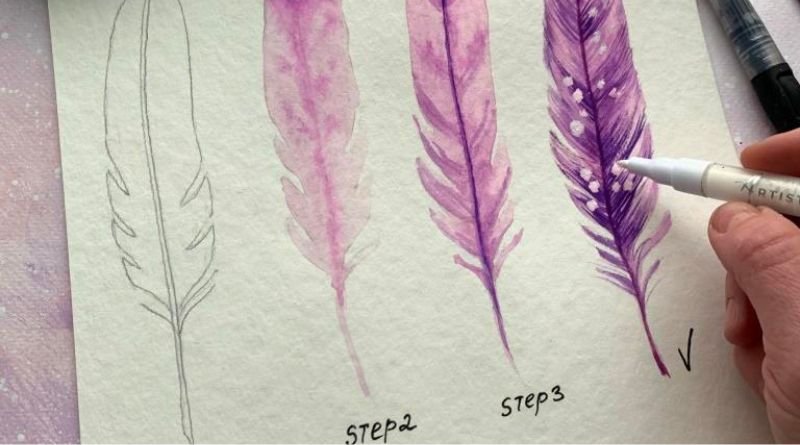Dibujo, or drawing, is one of the most universal forms of artistic expression. Whether you’re looking to pass the time, improve your skills, or just enjoy the therapeutic process of sketching, easy drawings can help you build a solid foundation in art. In this article, we’ll dive into the concept of “faciles dibujos” (easy drawings) and explore how simple sketching techniques can be enjoyable for beginners, kids, and seasoned artists alike. We’ll also share fun drawing ideas that can be applied to various types of art projects, whether you’re sketching for fun or creating a masterpiece.
What are “Faciles Dibujos”?
The term “faciles dibujos” translates to “easy drawings” in English. These are basic, simple sketches or illustrations that anyone can do, even with little to no prior drawing experience. They don’t require advanced skills or intricate detail. Instead, the focus is on simplicity and creativity.
“Faciles dibujos” are perfect for beginners looking to practice, for children developing their drawing skills, or for anyone who simply wants to relax and have fun while drawing. Whether it’s basic shapes, animals, or cute characters, easy drawings can be a gateway to more complex art as you gain confidence and skill.
Why Should You Try Easy Drawings?
- Builds Confidence: Drawing can be intimidating for beginners, but simple sketches allow you to see immediate progress, which builds your confidence. Completing an easy drawing gives you a sense of accomplishment and encourages further practice.
- Enhances Creativity: Easy drawings leave room for your imagination. You can add your own flair, play with colors, and experiment with different designs without the pressure of perfection.
- Improves Fine Motor Skills: Even simple sketches require control of your pencil or pen. By practicing these easy drawings regularly, you’re improving your hand-eye coordination and fine motor skills.
- Stress-Relief: Drawing can be a calming activity. The repetitive motion and focus on simple forms can act as a form of mindfulness, reducing stress and promoting relaxation.
- A Perfect Starting Point: If you want to get into drawing but feel overwhelmed by complex art, starting with easy drawings helps you build the foundational skills needed for more advanced projects.
Basic Drawing Techniques for Beginners
Before diving into ideas for easy drawings, let’s go over some basic techniques that will help you as you start sketching:
1. Start with Basic Shapes
Most objects, animals, and characters can be broken down into simple shapes. Circles, squares, ovals, triangles, and rectangles are the building blocks for more complex drawings.
For example:
- A cat can be sketched by starting with a round head (circle) and a body (oval).
- A house can be drawn using a square for the base and a triangle for the roof.
This technique helps you focus on structure and proportions without worrying about small details early on.
2. Use Light Sketching Lines
Start your drawing with light, gentle lines that you can easily erase later. These are known as “sketching lines” and serve as the framework for your final design. Once you’re happy with your basic shapes and composition, you can go over the lines with darker strokes or a pen.
3. Keep it Loose
In the early stages of drawing, don’t focus too much on perfection. Draw freely, and don’t be afraid to make mistakes. The more you draw, the better your skills will become.
4. Practice Shading
Shading adds depth and dimension to your drawings. Start by practicing how to shade lightly, building up darker areas gradually. For simple sketches, even a few light lines of shading can bring your drawings to life and make them feel more realistic.
Fun and Easy Drawing Ideas for Beginners
Here are some simple and fun ideas to get you started with easy drawings:
1. Cute Animals
Animals are a great place to start. Most animals have simple shapes that make them easy to draw. Some great examples include:
- Cats: Start with a round head and an oval body, then add pointy ears, eyes, whiskers, and a tail.
- Dogs: Draw a rounded shape for the body, a circle for the head, and floppy ears. Add a wagging tail for a cute effect!
- Fish: Begin with a teardrop shape for the body, and add a simple tail and fins.
You can even experiment with cartoon versions of animals by exaggerating their features (like big eyes or silly smiles).
2. Geometric Patterns
Geometric shapes like circles, squares, triangles, and hexagons are easy to draw and can be arranged in interesting patterns. Use these shapes to create repetitive designs, mandalas, or abstract patterns.
- Example: Draw a series of concentric circles (circles within circles), or arrange triangles in a way that creates a cool geometric design.
3. Flowers and Plants
Nature offers endless inspiration for easy drawings. Flowers, trees, and leaves are relatively simple to sketch, especially when you focus on basic shapes.
- Example: A flower can start with a small circle in the center and several petal shapes radiating out from it.
- Example: A simple tree can be drawn with a straight trunk and a fluffy, circular canopy of leaves.
4. Cartoon Characters
If you’re a fan of cartoons, drawing your favorite characters is a great way to practice. You can start by drawing simple, cartoon versions of animals, people, or even objects.
- Example: Draw a smiling, round-faced character with big eyes, a small nose, and a simple outfit.
- Example: A stick-figure superhero with a cape can be a fun and easy drawing for beginners.
5. Food Illustrations
Food items often have simple shapes that are easy to replicate. Try drawing fruit, cupcakes, or even a pizza!
- Example: A slice of pizza can be drawn as a triangle with a curved crust. Add small circles for toppings like pepperoni or olives.
- Example: Draw a cute apple with a round shape, a small leaf, and a simple stem.
6. Simple Faces and Expressions
Drawing faces can be tricky, but you can start with basic shapes like circles or ovals for the face and then add simple features like eyes, a nose, and a mouth.
- Example: Draw a basic face with large eyes, a small nose, and a smile. Add simple expressions like happy, sad, or surprised to practice emotions.
7. Simple Landscapes
Landscapes are also a great way to practice drawing. Start by drawing basic elements like the sky, mountains, trees, and the sun.
- Example: Draw a rolling hill with a simple sun setting behind it. Add a few clouds or a tree to complete the scene.
- Example: A beach scene can start with a wavy line for the water, a simple curved line for the horizon, and a small sun.
Tips to Improve Your Drawing Skills
To get better at drawing, here are some tips to keep in mind:
- Practice Daily: Even if it’s just for a few minutes a day, daily practice helps improve your skills. The more you draw, the more natural it becomes.
- Use References: If you’re stuck, use references like photos or objects in real life to guide your drawings. Don’t be afraid to look up tutorials or step-by-step guides for inspiration.
- Experiment with Colors: Once you’re comfortable with sketching, try adding color to your drawings. Colored pencils, markers, or digital tools can add depth and vibrancy to your art.
- Take Your Time: Don’t rush your drawings. Give yourself time to explore different styles, experiment with lines, and find your artistic voice.
- Be Kind to Yourself: Art is a process, and no one’s work is perfect. Don’t worry about making mistakes—each one is an opportunity to learn.
Where to Find Inspiration for Easy Drawings
Finding inspiration for easy drawings is simple, and there are many places to look for ideas:
- Art Websites and Social Media: Platforms like Pinterest, Instagram, and DeviantArt are filled with millions of easy drawing ideas, from step-by-step guides to simple sketches.
- Nature: Go outside and observe the world around you. Draw the flowers in your garden, the trees in the park, or the animals you see at a zoo.
- Books: Check out children’s books or art books for easy and cute drawing ideas that you can replicate.
- Your Own Imagination: Sometimes, the best inspiration comes from your own mind. Draw something based on your feelings, dreams, or memories.
Conclusion
“Faciles dibujos” (easy drawings) are a great way to explore the world of art, whether you’re a beginner or simply looking for a relaxing creative outlet. By starting with simple shapes, playful animals, or fun patterns, you can build your confidence and improve your skills over time. Remember, drawing is about enjoying the process and expressing yourself—so don’t be afraid to experiment and make mistakes along the way. Happy drawing!



